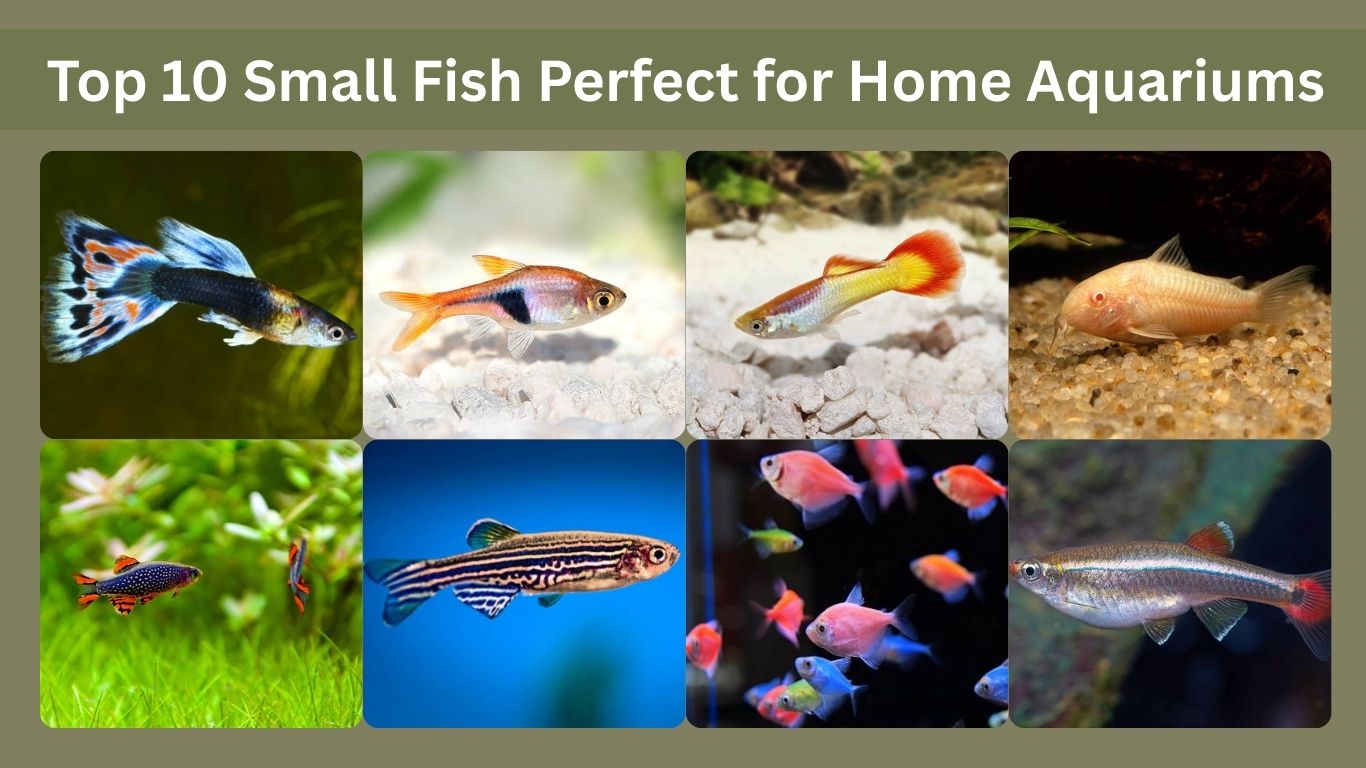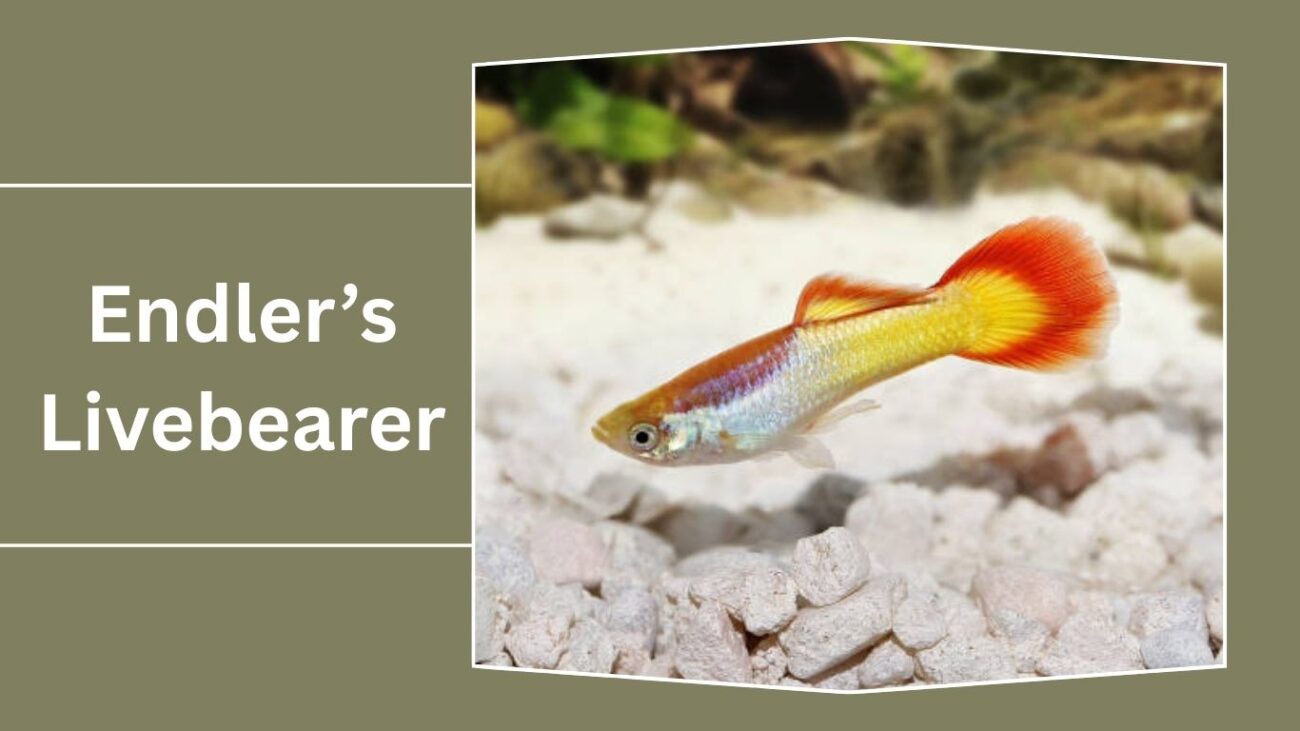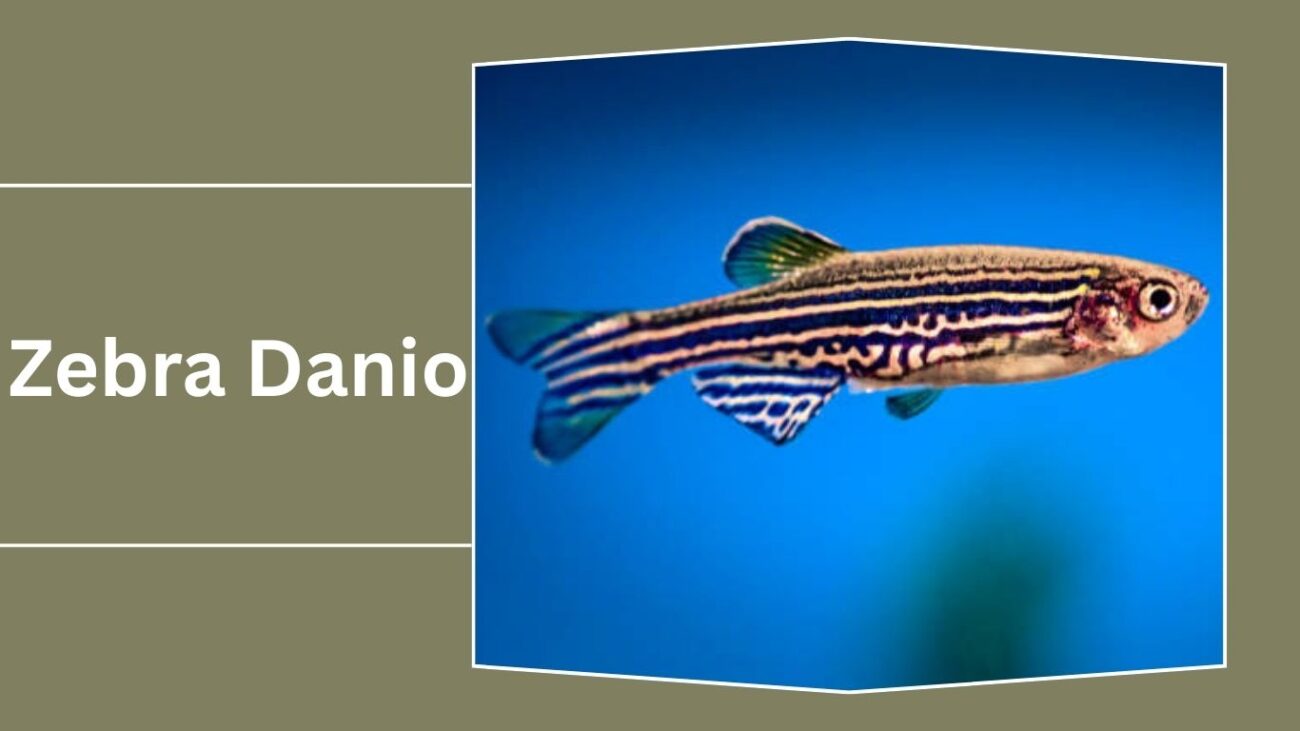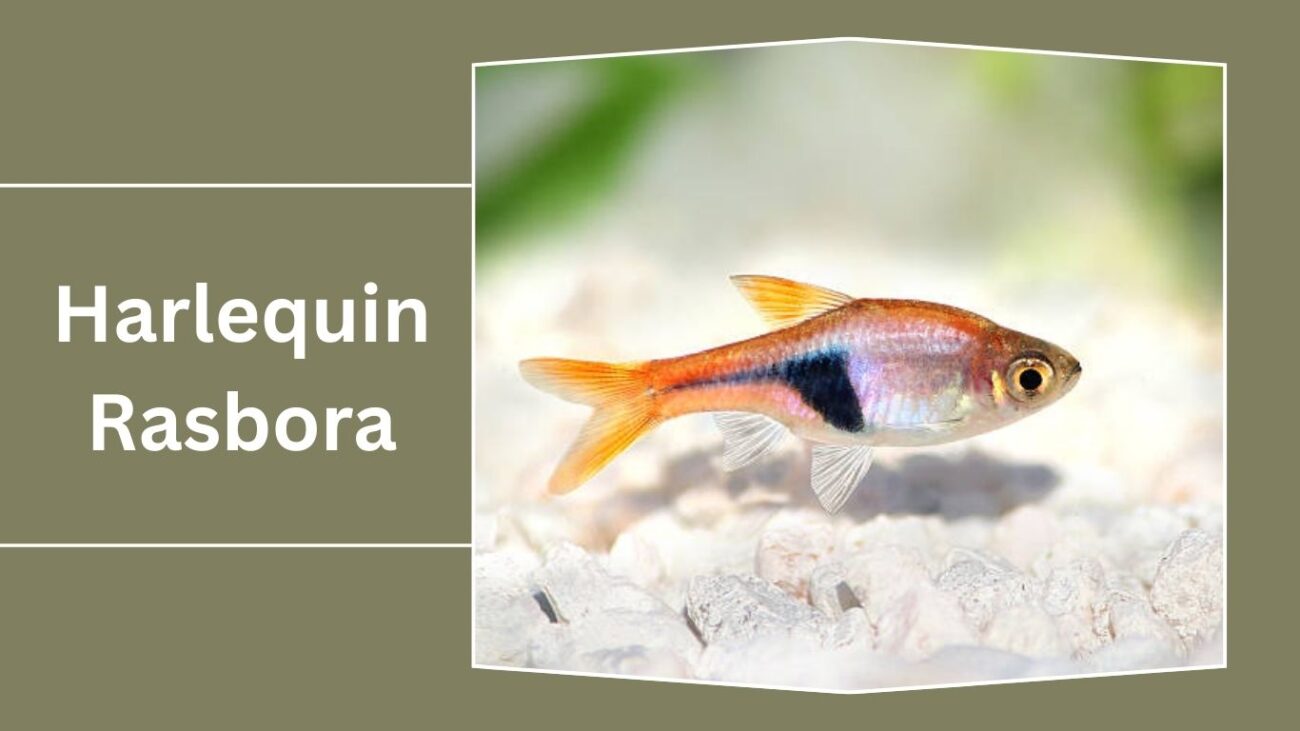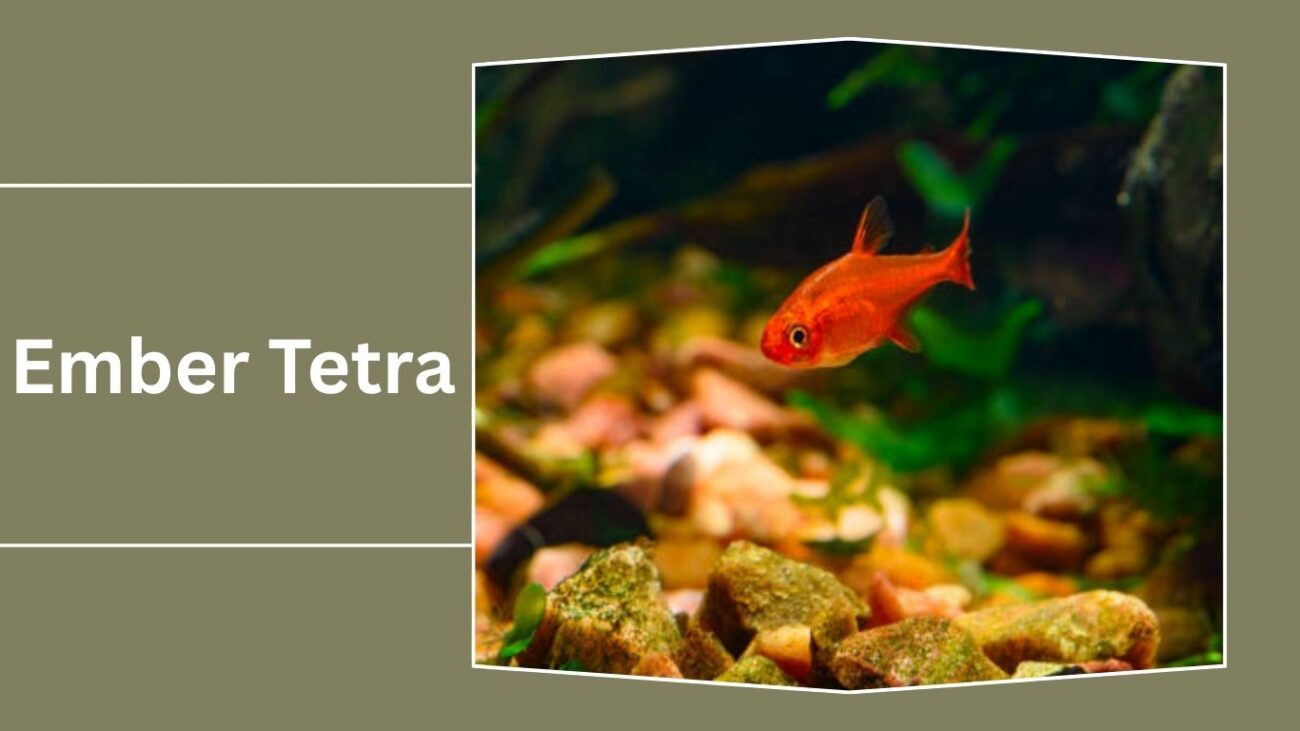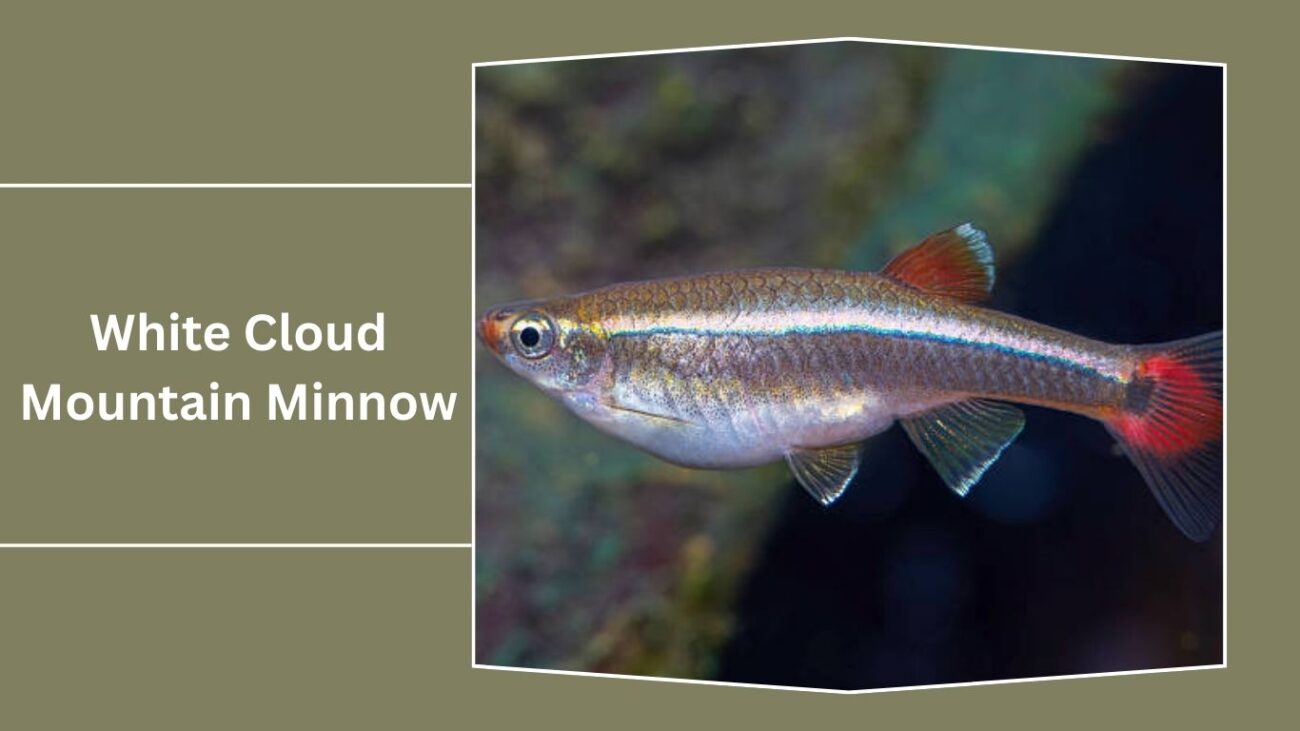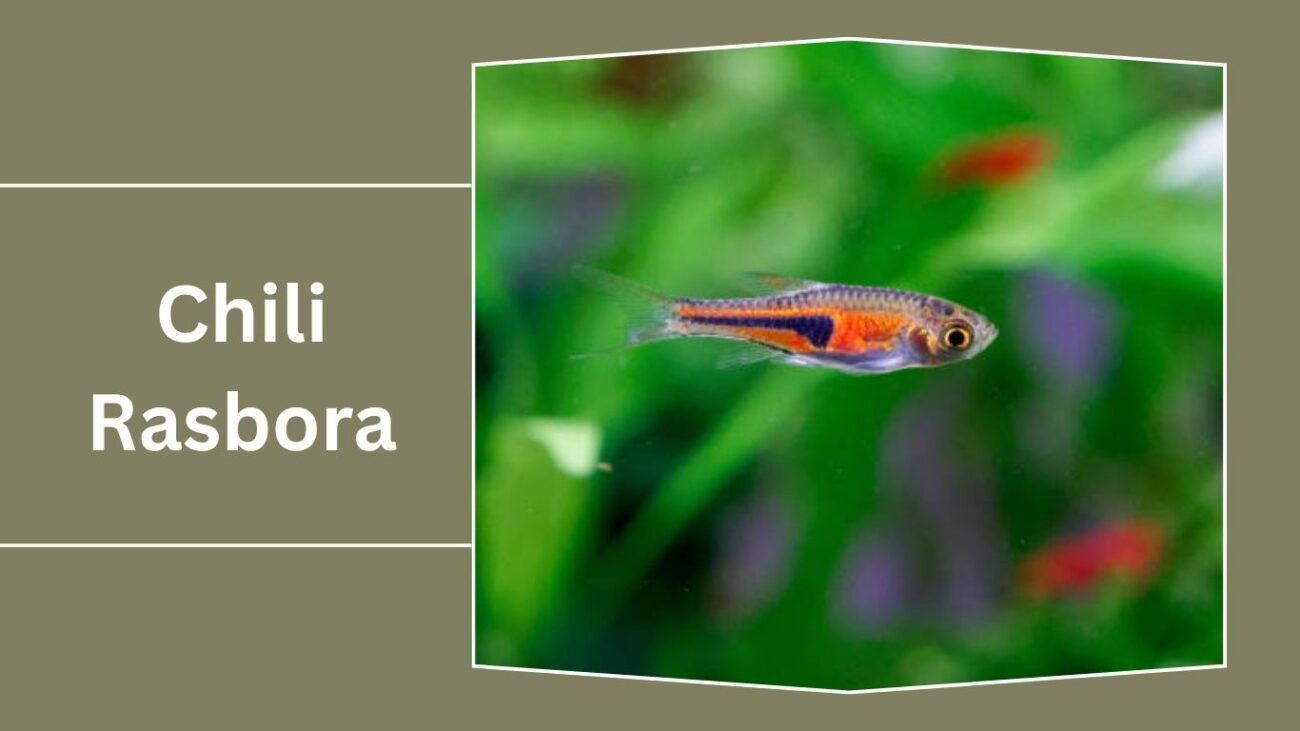Keeping small fish in aquariums is a rewarding hobby that brings life, color, and tranquility to any space. These fish are ideal for beginners and experienced aquarists alike, as they are generally hardy, peaceful, and easy to care for. From vibrant schooling species to playful bottom dwellers, each one adds unique beauty and charm to the tank. This list highlights ten of the best small fish to brighten up your aquarium.
1. Neon Tetra
A small, vibrant freshwater fish known for its dazzling blue and red stripes. Neon Tetras are peaceful, hardy, and thrive in community tanks, making them one of the most popular choices for aquarium enthusiasts.
Identification
- Scientific name: Paracheirodon innesi
- Size: 1.2–1.5 inches (3–4 cm)
- Lifespan: 5–10 years
- Color: Iridescent blue with a bright red stripe along the body
- Origin: Amazon Basin, South America
Why It’s Best for Aquariums
Neon Tetras are easy to care for, adapt well to different environments, and add striking color to aquariums. Their small size allows them to live comfortably in tanks as small as 10 gallons.
Behavior
They are schooling fish, happiest in groups of six or more. Their calm and non-aggressive temperament makes them compatible with many other peaceful species.
Tank Requirements
They thrive in soft, slightly acidic water with temperatures between 70–81°F (21–27°C). A planted tank with dim lighting closely resembles their natural Amazonian habitat.
Feeding Habits
Neon Tetras are omnivores, enjoying a varied diet of high-quality flakes, micro-pellets, frozen daphnia, and live brine shrimp. A balanced diet enhances their colors and health.
2. Guppy
A colorful and lively freshwater fish, Guppies are among the most popular aquarium choices for beginners and experts alike. Known for their wide variety of tail shapes and colors, they bring constant movement and beauty to any tank.
Identification
- Scientific name: Poecilia reticulata
- Size: 1.5–2.5 inches (4–6 cm)
- Lifespan: 2–3 years
- Color: Wide range—red, blue, yellow, green, patterned varieties
- Origin: South America (Brazil, Venezuela, Guyana, and Caribbean islands)
Why It’s Best for Aquariums
Guppies are hardy, adaptable, and thrive in a variety of water conditions. Their bright colors and active swimming make them visually appealing, and they are easy to breed, making them a favorite for hobbyists.
Behavior
They are peaceful, social, and do well in community tanks. Male Guppies are more colorful and often display courtship behaviors, while females are larger but less vibrant.
Tank Requirements
Guppies thrive in freshwater tanks with temperatures between 72–82°F (22–28°C). They prefer slightly alkaline water and benefit from live plants and open swimming spaces.
Feeding Habits
Being omnivores, Guppies eat flakes, pellets, algae-based foods, and enjoy live or frozen foods like daphnia and brine shrimp. A balanced diet helps maintain their vivid colors and energy.
3. Endler’s Livebearer
A close relative of the Guppy, Endler’s Livebearer is a small, colorful fish known for its bright patterns and energetic swimming. They are hardy, adaptable, and ideal for small community aquariums.
Identification
- Scientific name: Poecilia wingei
- Size: 1–1.8 inches (2.5–4.5 cm)
- Lifespan: 2–3 years
- Color: Vibrant orange, green, black, and metallic shades
- Origin: Northern Venezuela
Why It’s Best for Aquariums
Endler’s Livebearers are resilient and easy to care for, making them perfect for beginners. Their small size allows them to fit comfortably in nano tanks, and their unique, vivid patterns stand out beautifully in groups.
Behavior
They are active swimmers and very social. Males often chase females, but overall they remain peaceful with other species. Best kept in small groups for lively, interactive displays.
Tank Requirements
They thrive in freshwater tanks of at least 10 gallons with temperatures between 72–82°F (22–28°C). Slightly hard, alkaline water suits them best, with plenty of plants for cover.
Feeding Habits
Omnivorous in nature, they eat flakes, micro-pellets, spirulina, and enjoy live or frozen foods like brine shrimp and mosquito larvae. A mixed diet keeps them healthy and enhances their bright colors.
4. Zebra Danio
A hardy and fast-swimming species, Zebra Danios are recognized for their striking horizontal stripes. These fish are playful, easy to care for, and thrive in community tanks with other peaceful species.
Identification
- Scientific name: Danio rerio
- Size: 2–2.5 inches (5–6 cm)
- Lifespan: 3–5 years
- Color: Blue and silver stripes running horizontally across the body
- Origin: South Asia (India, Bangladesh, Nepal, Myanmar)
Why It’s Best for Aquariums
Zebra Danios are extremely hardy, tolerating a wide range of water conditions, making them a great choice for beginners. Their energetic nature adds liveliness to aquariums, and their striping makes them visually striking.
Behavior
They are schooling fish, happiest in groups of six or more. Zebra Danios are highly active and often swim at the top and middle levels of the tank, keeping the environment dynamic.
Tank Requirements
They prefer tanks of at least 20 gallons with temperatures between 64–75°F (18–24°C). They enjoy well-oxygenated water and benefit from open swimming spaces with some plants for resting areas.
Feeding Habits
As omnivores, Zebra Danios accept flakes, pellets, and live or frozen foods such as daphnia and bloodworms. A varied diet helps maintain their energy and coloration.
5. Harlequin Rasbora
A graceful and peaceful schooling fish, the Harlequin Rasbora is well-loved for its striking coppery-orange body and distinctive black triangular patch. It is hardy, active, and a perfect addition to community aquariums.
Identification
- Scientific name: Trigonostigma heteromorpha
- Size: 1.5–2 inches (3.5–5 cm)
- Lifespan: 5–8 years
- Color: Copper-orange with a dark black wedge on the rear body
- Origin: Southeast Asia (Malaysia, Singapore, Sumatra, Thailand)
Why It’s Best for Aquariums
Harlequin Rasboras are hardy and peaceful, making them excellent for beginners. Their shimmering colors add elegance to planted tanks, and they adapt well to different community setups.
Behavior
They are schooling fish, preferring groups of 8–10 or more. They swim harmoniously in the middle levels of the aquarium, creating a stunning group display.
Tank Requirements
They thrive in tanks of at least 10 gallons with temperatures between 72–81°F (22–27°C). They prefer slightly acidic to neutral water and benefit from a planted setup with open swimming areas.
Feeding Habits
Omnivorous by nature, they enjoy flakes, micro-pellets, and small live or frozen foods like mosquito larvae and daphnia. A varied diet supports their vibrant coloration and health.
6. Ember Tetra
A tiny but brilliant species, Ember Tetras are named for their fiery orange-red glow. Their small size, peaceful nature, and shoaling behavior make them a favorite for nano and planted aquariums.
Identification
- Scientific name: Hyphessobrycon amandae
- Size: 0.6–0.8 inches (1.5–2 cm)
- Lifespan: 2–4 years
- Color: Bright orange to reddish body with translucent fins
- Origin: Central Brazil (Araguaia River basin)
Why It’s Best for Aquariums
Ember Tetras bring a splash of color to even the smallest tanks. They are hardy, easy to care for, and look especially stunning in heavily planted aquascapes where their colors contrast beautifully with greenery.
Behavior
They are peaceful, shoaling fish that should be kept in groups of at least 8–10. Ember Tetras swim actively in the mid-water column and are known for their calm temperament.
Tank Requirements
A 10-gallon tank or larger is ideal, with temperatures between 73–84°F (23–29°C). They prefer soft, slightly acidic water and heavily planted environments with driftwood or leaf litter.
Feeding Habits
They eat small flakes, crushed pellets, and micro live or frozen foods such as baby brine shrimp and microworms. Regular varied feeding keeps them healthy and enhances their glowing coloration.
7. White Cloud Mountain Minnow
A hardy, colorful species, White Cloud Mountain Minnows are often called the “poor man’s Neon Tetra” due to their shimmering appearance. They are peaceful, easy to keep, and thrive in cooler water conditions, making them unique among tropical fish.
Identification
- Scientific name: Tanichthys albonubes
- Size: 1.5 inches (4 cm)
- Lifespan: 3–5 years
- Color: Silver-green body with iridescent sheen and red-tipped fins
- Origin: White Cloud Mountain, China
Why It’s Best for Aquariums
These fish are excellent for unheated or temperate tanks since they tolerate cooler waters. Their resilience and attractive appearance make them great for both beginners and experienced aquarists.
Behavior
They are peaceful schooling fish, happiest in groups of 6 or more. Their playful swimming and shoaling behavior create a lively, coordinated display.
Tank Requirements
They thrive in tanks of at least 10 gallons with temperatures between 60–72°F (16–22°C). They prefer clean, well-oxygenated water and do well in both planted and simple setups.
Feeding Habits
They are omnivores, feeding on flakes, micro-pellets, frozen daphnia, and live foods such as mosquito larvae. A varied diet enhances their colors and vitality.
8. Corydoras Catfish (Dwarf Types)
Corydoras Catfish are small, bottom-dwelling fish known for their playful nature and social behavior. Dwarf types such as Corydoras pygmaeus are perfect for smaller aquariums, keeping tanks clean while adding charm.
Identification
- Scientific names: Corydoras pygmaeus, Corydoras hastatus, Corydoras habrosus
- Size: 1–1.2 inches (2.5–3 cm)
- Lifespan: 3–4 years
- Color: Pale silver-gray with dark stripes or spots depending on species
- Origin: South America (Amazon Basin and surrounding rivers)
Why It’s Best for Aquariums
Dwarf Corydoras are peaceful, sociable, and efficient scavengers. They help keep the substrate clean by foraging for leftover food, making them both decorative and useful.
Behavior
They are schooling fish that thrive in groups of 6 or more. They are active bottom dwellers, often seen “winking” by moving their eyes and playfully darting around the substrate.
Tank Requirements
They prefer tanks of 10 gallons or larger, with soft sandy substrates to protect their delicate barbels. Ideal water temperature is 72–79°F (22–26°C), with gentle filtration and hiding spots.
Feeding Habits
Corydoras eat sinking pellets, algae wafers, and enjoy occasional live or frozen foods like bloodworms and brine shrimp. They should not rely solely on scavenging and require dedicated feeding.
9. Celestial Pearl Danio
Also known as Galaxy Rasbora, the Celestial Pearl Danio is a stunning nano fish with a galaxy-like spotted body. Its beauty, peaceful nature, and compact size make it one of the most desired fish for aquascaped tanks.
Identification
- Scientific name: Danio margaritatus
- Size: 0.8–1 inch (2–2.5 cm)
- Lifespan: 3–5 years
- Color: Deep blue body with white “pearl” spots and bright orange fins
- Origin: Myanmar (Southeast Asia)
Why It’s Best for Aquariums
Its unique starry pattern and contrasting fin colors make it a centerpiece in nano tanks. Despite its delicate look, it is hardy and relatively easy to care for when kept in stable conditions.
Behavior
They are peaceful but slightly shy. Best kept in groups of 6 or more, where they display natural schooling and reduce stress. Males often show off bright colors when competing or courting.
Tank Requirements
They thrive in 10-gallon tanks or larger, with temperatures between 72–79°F (22–26°C). Dense plants, hiding spots, and subdued lighting bring out their best colors and natural behavior.
Feeding Habits
They enjoy micro-pellets, crushed flakes, and live or frozen foods such as daphnia and baby brine shrimp. Small, frequent feedings maintain health and coloration.
10. Chili Rasbora
One of the tiniest aquarium fish, Chili Rasboras glow bright red, creating a stunning visual effect in planted aquariums. Despite their size, they are hardy and thrive in peaceful community setups.
Identification
- Scientific name: Boraras brigittae
- Size: 0.6–0.8 inches (1.5–2 cm)
- Lifespan: 4–6 years
- Color: Bright red body with a dark stripe along the flank
- Origin: Borneo, Indonesia
Why It’s Best for Aquariums
Their small size and intense coloration make them ideal for nano tanks and aquascapes. They stand out beautifully against green plants and do well in community tanks with equally peaceful species.
Behavior
They are shy but active when kept in groups of 10 or more. Their peaceful schooling behavior adds movement and color without disturbing other tank mates.
Tank Requirements
A minimum of 5–10 gallons is sufficient, with temperatures between 72–82°F (22–28°C). They thrive in soft, slightly acidic water with lots of plants and shaded areas.
Feeding Habits
Due to their tiny mouths, they require micro foods such as powdered flakes, infusoria, and live or frozen micro foods like microworms and baby brine shrimp. Regular varied feeding enhances their vivid red glow.

